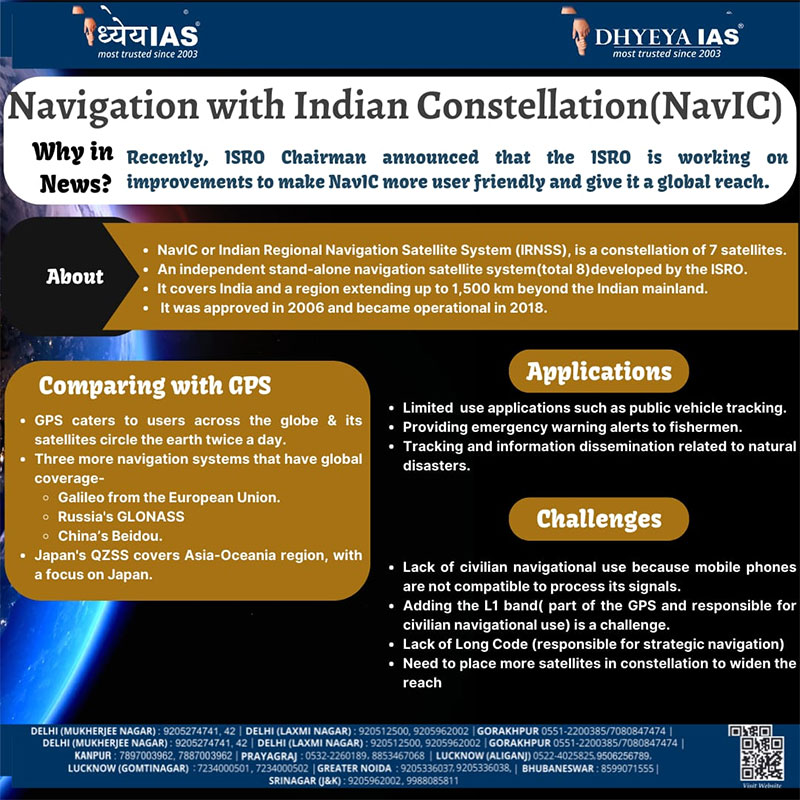Info-paedia : Navigation with Indian Constellation (NavIC)
Why in News?
- Recently, ISRO Chairman announced that the ISRO is working on
improvements to make NavIC more user friendly and give it a global reach.
About
- NavIC or Indian Regional Navigation Satellite System (IRNSS), is a
constellation of 7 satellites.
- An independent stand-alone navigation satellite system (total 8)
developed by the ISRO.
- It covers India and a region extending up to 1,500 km beyond the Indian
mainland.
- It was approved in 2006 and became operational in 2018.
Comparing with the GPS
- GPS caters to users across the globe & its satellites circle the earth twice a
day.
- Three more navigation systems that have global coverage-
- Galileo from the European Union.
- Russia's GLONASS.
- China’s Beidou.
- Japan's QZSS covers Asia-Oceania region, with a focus on Japan.
Applications
- Limited use applications such as public vehicle tracking.
- Providing emergency
warning alerts to fishermen.
- Tracking and information dissemination related to natural disasters.
Challenges
- Lack of civilian navigational use because mobile phones are not
compatible to process its signals.
- Adding the L1 band (part of the GPS and responsible for civilian
navigational use) is a challenge.
- Lack of Long Code (responsible for strategic navigation).
- Need to place more satellites in constellation to widen the reach.

